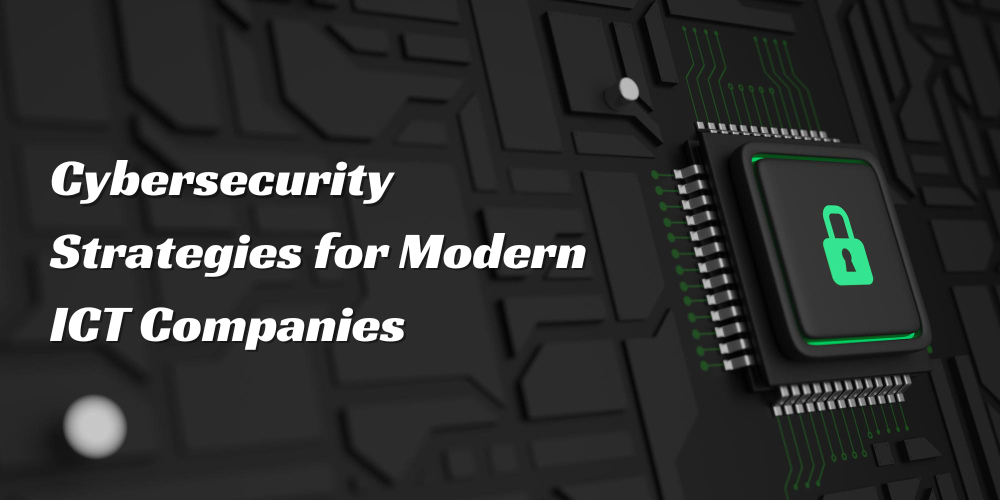Cybersecurity Strategies for Modern ICT Companies
Key Takeaways
- Understanding the importance of early detection of cyber threats
- The role of advanced cybersecurity tools in mitigating risks
- How ICT companies can enhance their cybersecurity measures
- Learn from real-world examples of effective cybersecurity practices.
Understanding Cyber Threats
Cyber threats in today’s digital age pose significant challenges for Information and Communication Technology (ICT) companies. These threats can range from malware attacks and ransomware to sophisticated phishing schemes and even advanced persistent threats that can stay dormant within a system for long periods before launching an attack. Understanding the variety and complexity of these threats is crucial for devising effective cybersecurity measures. One of the most daunting tasks for ICT companies is to stay ahead of these ever-evolving cyber threats. This requires a multifaceted approach that includes technical solutions and a comprehensive understanding of the threat landscape.
ICT companies worldwide continually seek comprehensive solutions to safeguard their digital infrastructures from malicious activities—modern cybersecurity strategy.
Importance of Early Detection
Early detection of cyber threats can prevent extensive damage and loss. Utilizing advanced cybersecurity tools to monitor and identify potential threats at an early stage is essential. This proactive approach can save companies from severe financial losses and reputational damage. Many cyber threats start small but can escalate quickly if not detected early. For instance, undetected malware could exfiltrate sensitive data over months, causing significant harm before being identified. Given the digital transformation many organizations undergo, the attack surfaces are expanding, presenting more opportunities for cyber attackers. One notable example is Fortinet China, which employs advanced cybersecurity tools to avoid potential dangers. Fortinet’s solution includes the capability to detect, prevent, and remediate cyberattacks at the earliest possible stage, illustrating the importance of advanced and integrated tools in
Early detection enables ICT companies to act swiftly and mitigate risks before they become unmanageable. Furthermore, early detection helps in understanding the nature of the threat, which can be crucial for preventing future attacks. Recognizing recurring patterns or new tactics attackers employ can help refine defence mechanisms. By incorporating early detection systems, ICT firms can swiftly address and neutralize threats, thereby maintaining the integrity of their operations and protecting sensitive data. This helps minimize the immediate impact and strengthens the organization’s cybersecurity posture by building resilience against future threats.
Tools and Technologies in Cybersecurity
Modern cybersecurity relies on various tools and technologies. Solutions such as Fortinet FortiRecon offer comprehensive threat detection and response capabilities. These tools provide real-time monitoring and analysis of network traffic, helping identify and respond to threats quickly. They can automate many aspects of threat detection, enabling faster and more efficient responses. Moreover, Fortinet FortiRecon integrates multiple layers of security, providing a holistic approach to managing threats.
Additionally, integrating AI and machine learning into cybersecurity helps identify patterns and anomalies quickly. Artificial intelligence is becoming increasingly critical because it can process vast amounts of data at unprecedented speeds. AI-powered tools can identify subtle signs of cyber threats that human analysts might miss. For example, sophisticated algorithms can detect unusual activity on user accounts or deviations from standard network behaviour that could indicate a potential breach.
Moreover, machine learning algorithms can adapt and evolve, learning from each threat to improve future detection capabilities. These technologies are invaluable in creating a robust cybersecurity posture for ICT companies. By leveraging AI and machine learning, companies can enhance their threat detection and response processes, making them more effective and efficient. As a result, ICT companies can better protect their networks and data, ensuring the continued safety and security of their digital assets.
Real-World Examples
Numerous ICT companies have successfully implemented advanced cybersecurity measures. For instance, a significant financial institution recently employed advanced tools to protect its network infrastructure, significantly reducing cyber incidents. This institution used AI-powered threat detection, real-time monitoring, and advanced intrusion prevention systems to safeguard its data. These advanced technologies enabled the institution to quickly identify and respond to potential threats, minimizing the risk of data breaches and other cyber incidents.
Learn more about the impact of cybersecurity in financial sectors through this BBC article. These real-world examples highlight the efficacy of robust cybersecurity strategies and serve as a testament to the importance of proactive security measures. By analyzing these cases, other ICT companies can gain insights into effective practices and tools that can be adapted to their specific needs and environments. Success stories from various sectors provide valuable lessons on implementing and fine-tuning cybersecurity measures, ensuring better protection against potential threats.
Best Practices for ICT Companies
- Regularly update and patch systems: Keeping software and systems up-to-date is one of the simplest yet most effective cybersecurity strategies. This helps to close vulnerabilities that malicious actors could exploit.
- Conduct frequent cybersecurity training for employees: Human error is a significant factor in many cyber incidents. Regular exercise can help employees recognize potential threats and understand the best practices for maintaining security. Training should cover various aspects of cybersecurity, such as recognizing phishing emails, creating strong passwords, and understanding the importance of data protection.
- Perform routine security audits and risk assessments: Regular audits and inspections can help identify potential weaknesses in your security posture before they can be exploited. These audits should include thorough network security evaluations, data protection measures, and compliance with relevant regulations.
- Implement multi-factor authentication: This adds a layer of security by requiring multiple verification forms before granting access to sensitive systems and data. Multi-factor authentication significantly reduces the risk of unauthorized access, even if login credentials are compromised. It is a straightforward yet highly effective measure that enhances the security framework.
By following these best practices, ICT companies can significantly bolster their defences against cyber threats. Regular updates and patches ensure that systems are protected against known vulnerabilities. Employee training helps foster a security-conscious culture, making preventing and identifying potential threats easier. Routine audits and risk assessments provide insights into potential security gaps, while multi-factor authentication adds an extra layer of protection. Implementing these practices requires a commitment from the highest levels of the organization down to every individual employee, ensuring a comprehensive approach to cybersecurity.
Furthermore, adopting a continuous improvement mindset is essential. The cybersecurity landscape is dynamic, with new threats emerging regularly. Therefore, ICT companies must remain vigilant and proactively update their security measures to address evolving risks. Engaging with cybersecurity experts and leveraging threat intelligence can provide valuable insights, helping organizations avoid potential threats.
Future Trends in Cybersecurity
The future of cybersecurity is promising, with continuous technological advancements. Innovations like quantum computing and blockchain are set to revolutionize the field. Quantum computing, for instance, is expected to significantly enhance encryption methods, making them much more challenging for cybercriminals to crack. Blockchain technology, on the other hand, offers a decentralized approach to security, making it more resilient to attacks. Distributed ledger technology, a key blockchain component, provides transparency and traceability, reducing the risk of data tampering and fraud.
Staying ahead of these trends will be essential for ICT companies looking to safeguard their digital assets effectively. As these technologies evolve, they will offer new ways to detect, prevent, and remediate cyber threats, ensuring the digital landscape remains secure and resilient. Companies that invest in these emerging technologies will likely find themselves better prepared to face the challenges of tomorrow’s cyber threat landscape. Furthermore, ongoing research and development in these areas will continue to drive innovation, providing even more robust security solutions in the future.
Organizations must also consider the role of regulatory compliance in shaping future cybersecurity strategies. The increasing emphasis on data protection and privacy regulations worldwide underscores the need for ICT companies to stay compliant while adopting advanced security measures. By aligning their cybersecurity initiatives with regulatory requirements, companies can ensure legal compliance and robust protection of sensitive data.

















